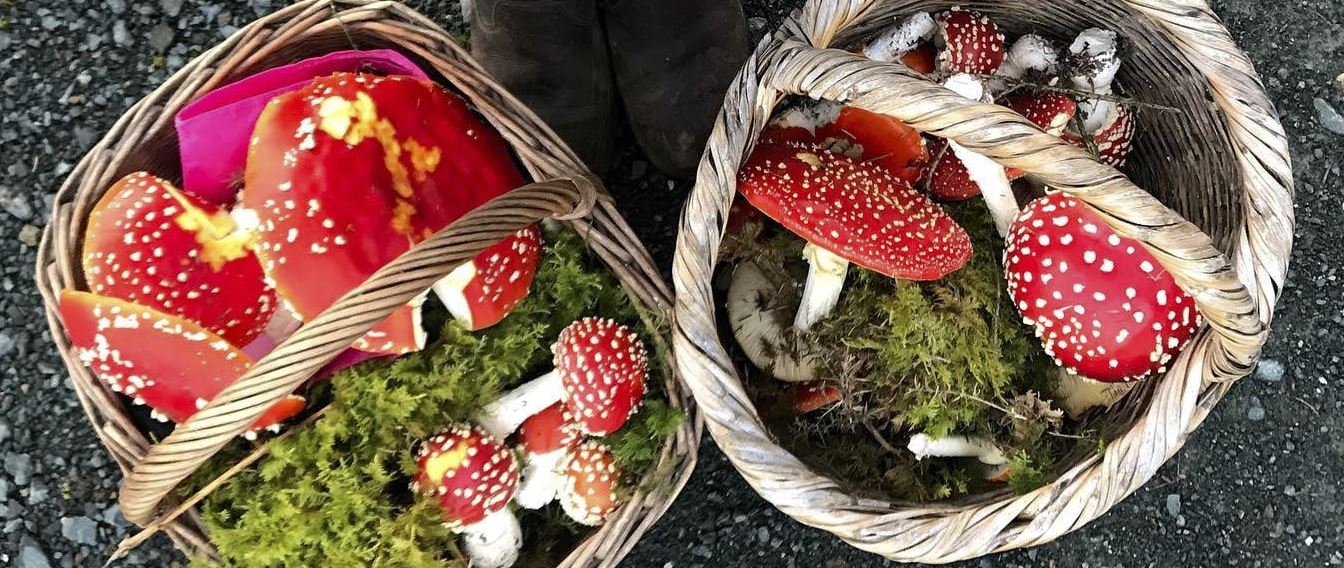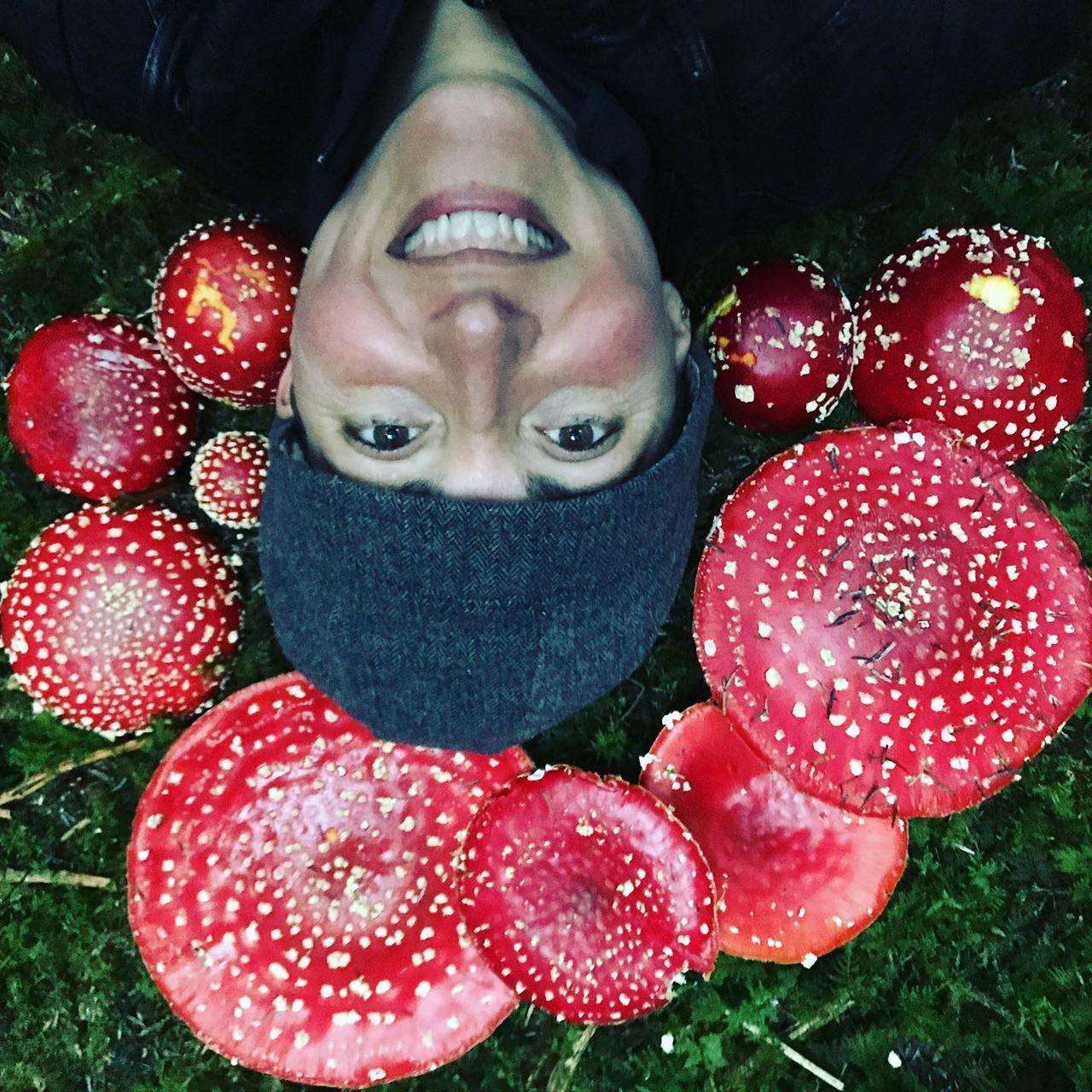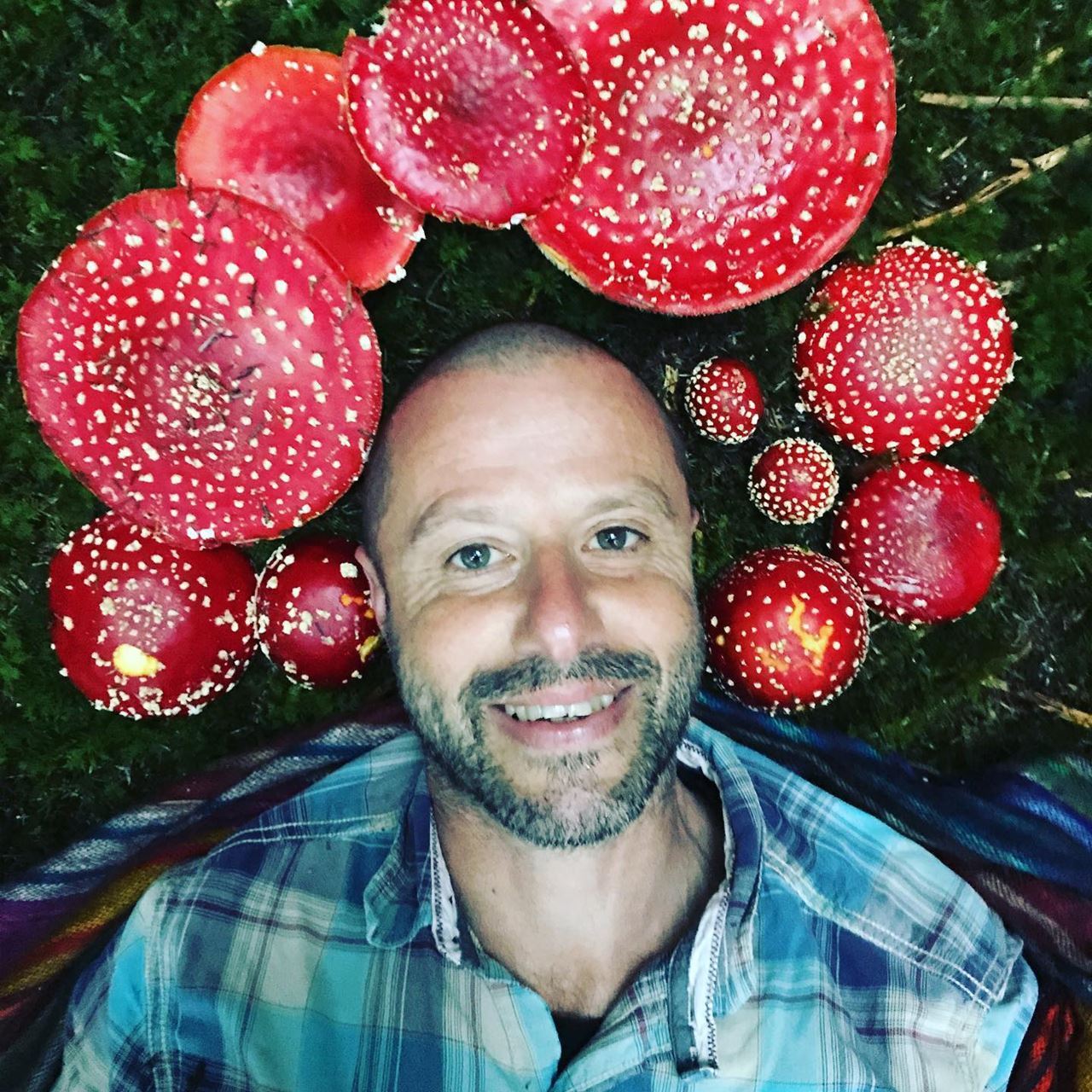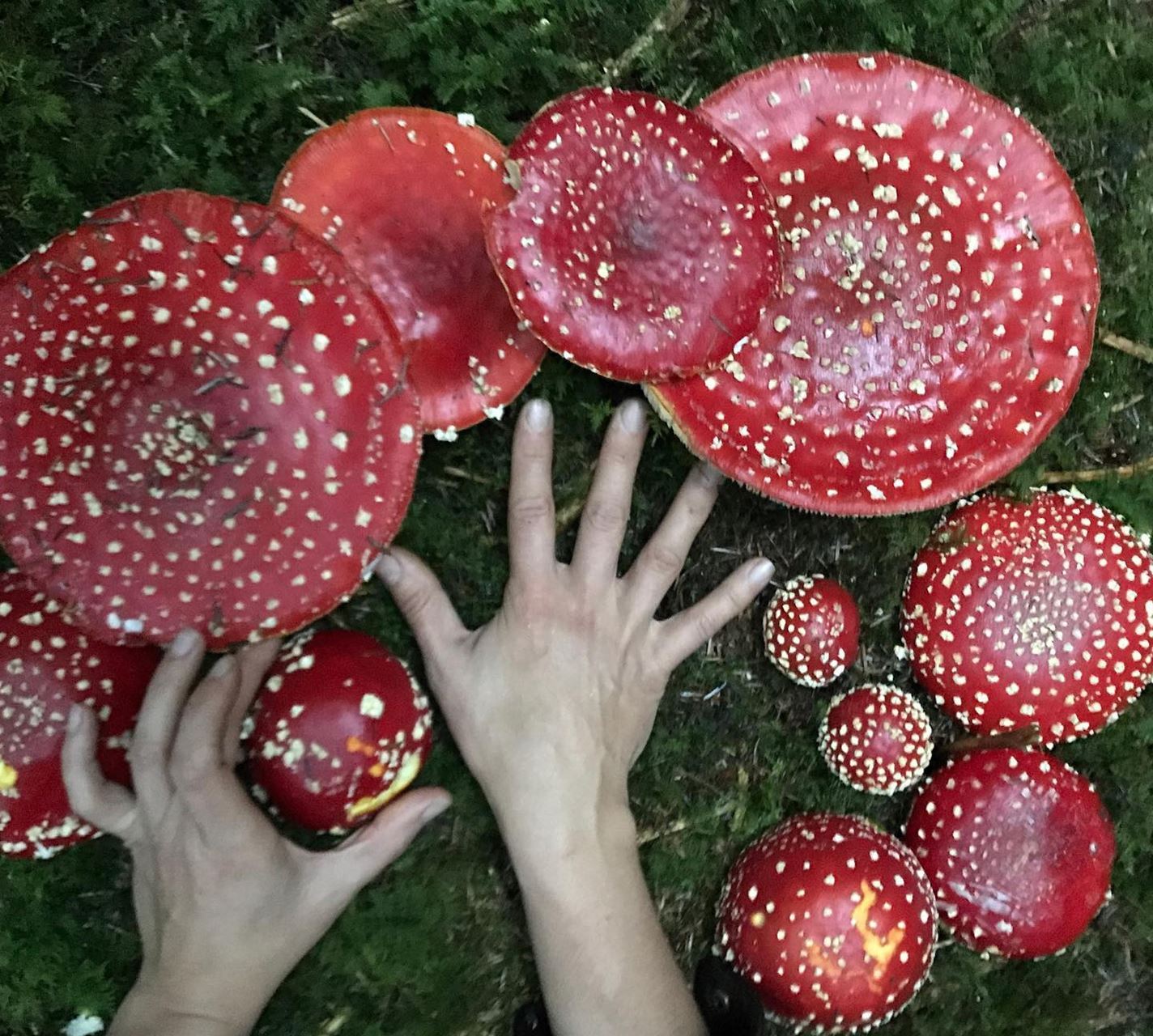
Courtney Tyler of Hips and Haws Wildcrafts shares her enthusiasm for all aspects of one of our most recognisable mushrooms, the fly agaric.
As a forager, like you perhaps, my interest in mushrooms lies most in those that are edible, deadible, and medicinal. And certainly those of entheogenic properties pique my interests. And of course, the Fly Agaric is all of these things.

Kidney beans, olives, coffee beans, chocolate, cashew nuts, puffer fish, raw chicken, raw pork, acorns, yew arils—there are so many foods that we have become accustomed to preparing in a special way to make them edible. Many edible mushrooms are avoided, as we are often not presented with information on which steps of soaking, salting, high heat or drying can render something toxic, unpalatable or indigestible into something edible and delicious. I particularly enjoy Geoff Dann’s Edible Mushrooms of UK and Ireland book as he finally presents one with the preparation methods to render many often avoided species edible.
The spectrum of edibility is something I really enjoy discussing with people on my mushroom walks. The newbies most pressing question: “what is this and is it edible?” can irk a bit as it’s oft repeated thousands of times on any foray or mushroom ID Facebook group. As you know, the answer is often much more complex than a simple yes or no. The species, the age, the condition, the growth of secondary moulds, the person’s constitution/ personal intolerances/ tolerances, allergies, the cooking or preparation methods: salting, boiling, application of high heat, quantity consumed, alcohol consumption etc. all can play a role in determining a delicious dinner from one that has you in the grips of gastrointestinal distress or worse.
Having said all this it is indisputable that fly agaric (Amanita muscaria) does contain toxins. However muscarine and ibutenic acid are not deadly in the quantity that AM contains and can easily be removed.
On the other side, there’s simplicity here too: does a substance contain toxins that are generally dangerous or toxic or indigestible to humans? The death cap is an example something that no matter your preparation methods contains toxins that cannot be neutralized. In contrast the fly agaric in which the toxins can easily be detoxified and the mushroom consumed (and enjoyed).

In February 2020 at the AoF Annual Meet Up I was excited to talk with Fergus Drennan about his experience and experimentation with this very fly agaric. Our conversation grew from words into an event celebrating this mushroom. We explore folklore, mythology and traditional use of fly agaric around the world and separate the facts from fiction. We learn about the herbal medicine uses of its tincture. Of course while considering fly agaric as food we also taste it. Some dishes served up at our last event included: fly agaric and sea buckthorn vegan ice cream, sweet fly agaric sushi rolls with coconut, pumpkin hummus with fly agaric, candied fly agaric crisps, and we also pickled and fermented fly agaric as a group.
